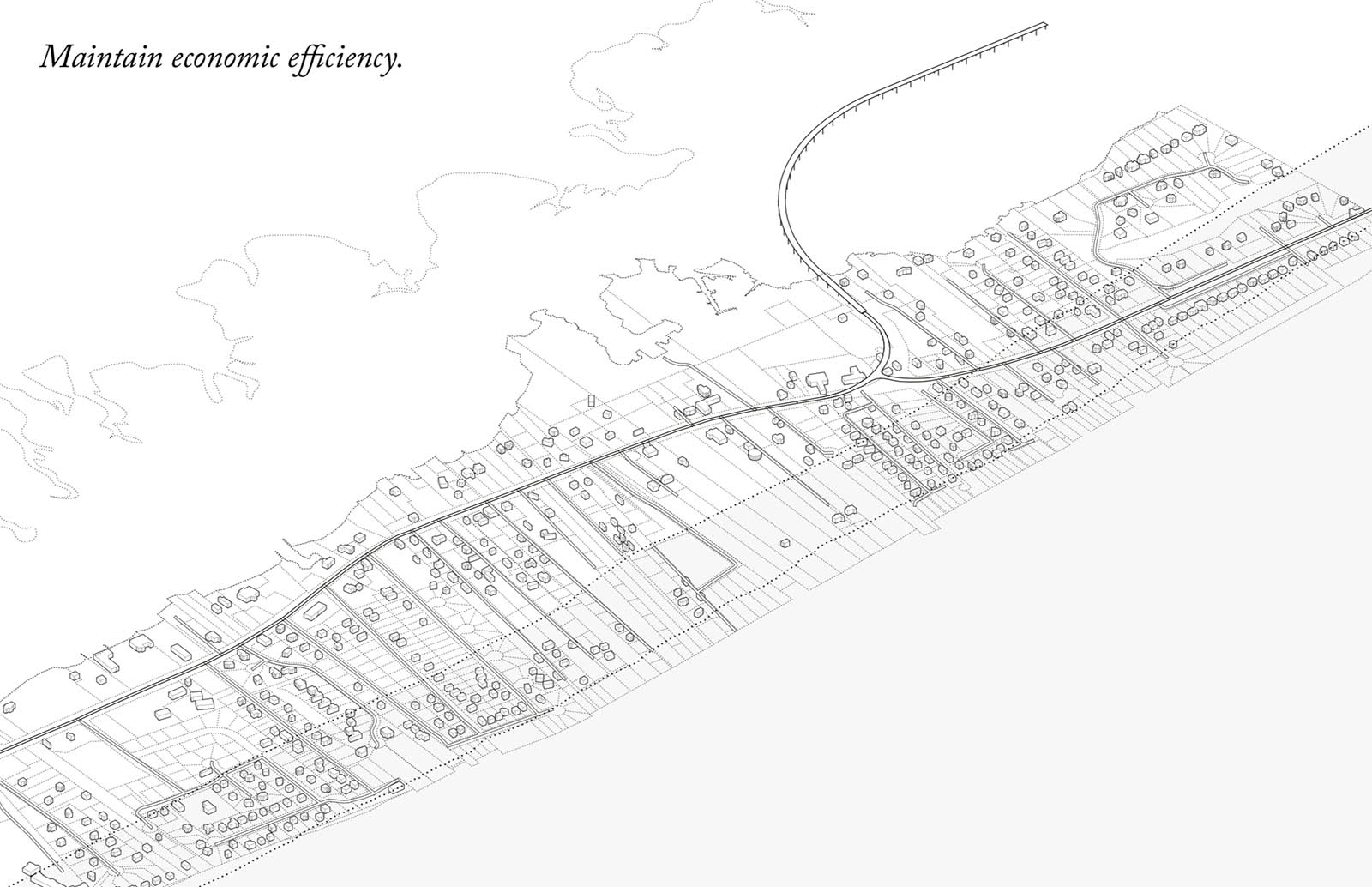Lines in The Sand: Rethinking Private Property On Barrier Islands

by Maggie Tsang (MDes ’19) and Isaac Stein (MLA/MDes ’20) — Recipient of the Design Studies Thesis Prize
This research examines the role of private property in transforming the landscape of barrier islands and proposes an alternative land trust as a redistributive approach to preemptive retreat. On barrier islands of the eastern seaboard, vacation homes occupy a majority of the land use, with properties held as financial assets rather than primary residences. With each successive storm as well as with the slow onset of sea level rise and accelerated sediment erosion, taxpayer dollars are disproportionally allocated towards the restabilization and reconstruction of damaged homes and infrastructure.
We argue that the resilience of barrier islands points not to an ecological capacity to withstand system shocks, but rather to the persistence and preservation of capital in the form of private property in predictably volatile environments. Our primary case study takes place on Hatteras Island, NC; more commonly known as the Outer Banks. Here, we test how to incentivize second homeowners to gradually yield ownership along the shoreline. Ultimately, we mobilize a vision for a nonprofit organization whose mission is to phase out development on barrier islands. Drawing from the economic model of a land trust, we offer a platform that informs decision-making around real estate donations based on erosion rates and climate risk. In addition, this project rehearses and speculates on the spatial and environmental effects of this alternative land trust by visualizing the resulting landscape and the process of unbuilding. By designing protocols and procedures that reverse prevailing development logics, this trust seeks to reduce public expenditure on privatized shorelines and ultimately to return the barrier island to its ecological function as a coastal defense line.














